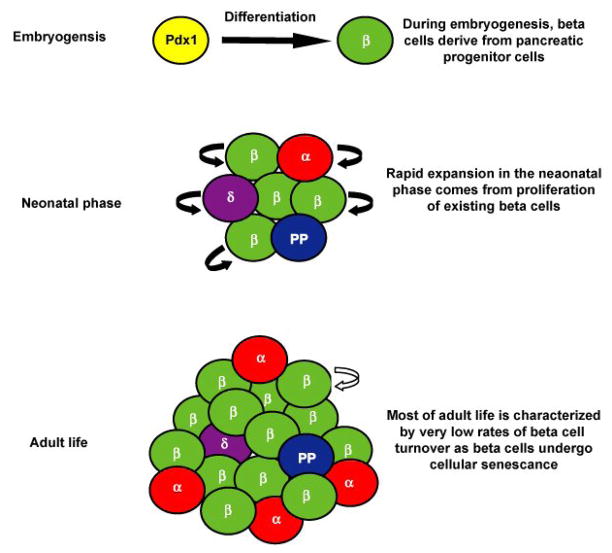Figure 2.
The proliferative capacity of beta cells changes during the progression from embryogenesis through adulthood. During early embryogenesis, beta cell umbers are established by direct differentiation from Pdx1+ progenitor cells. In late gestation through the neonatal stages of life, the beta cell population is expanded through high rates of proliferation in existing beta cells. In adulthood, low levels of beta cell replication maintain a constant set of beta cells ready to provide insulin to meet metabolic demand.

